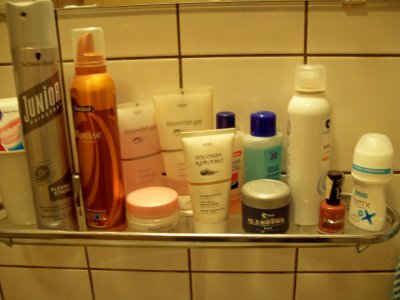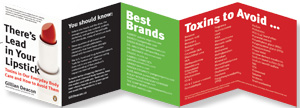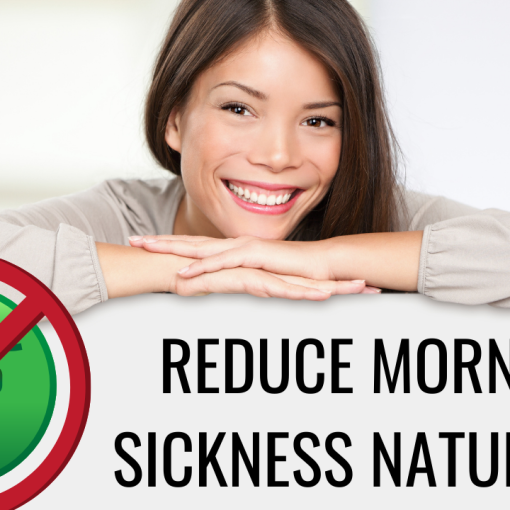 Here is the curious answer. QUITE POSSIBLY. You simply can’t assume safety testing on any personal care products. Why is that?
Here is the curious answer. QUITE POSSIBLY. You simply can’t assume safety testing on any personal care products. Why is that?
Well currently, Health Canada does not require any company to prove that their product is safe by any independent testing before it hits the market. Researchers have to proof something is unsafe before it gets pulled off the shelves. That’s why bisphenol A was common in baby bottles for years until enough research showed that it is harmful. The makers of bisphenal A never needed to prove that it was safe before they added to products. Doesn’t that seem backwards to you? It sure does to me.
Currently more and more research is building that many of the chemicals, which surround us and are in fact in us (because the human body is highly permeable) actually do us harm.
I must admit that to me, the whole situation does feel a wee bit overwhelming. Especially when it comes to making choices for my kids. What to do? Should I go home now and do a great big purge of everything that I have in my house… well not necessary. Although I’m sure, some of you will take that kind of strident approach. And that’s awesome. If that’s too much, there is another approach… just start small. And yes small changes do matter, because along with being very permeable, the body human is also a self-healing organism. Your body is constantly trying to rid itself of the toxins inside you and as soon as you stop adding new chemicals, the body’s chemical load starts to decrease.
Here are two small easy changes you can make easily next time you are at the store.
First, if you don’t want to abandon your favorite brand of antiperspirant or body cream for a more green product, then one simply change is to chose the unscented version of your favorite brand. Generally most brands of personal care products include synthetic fragrance. Chemicals called phthalates (pronounced thah-lites) are used to carry the fragrance. Phthalates in the human act as hormone disruptors, and especially affecting fertility and male fetuses (caused sexual organ abnormalities). Companies are not required to list phthalates as an ingredient. Strange I know. So the tell-tale sign that they are there, is when you see the word “fragrance or parfum” listed in the ingredients. The change is simple – choose products that are fragrance free or scented with essential oils. When essential oils are used to create scent in a product, they will be listed as such, for example, oil of lavender, or aromatic oil of neroli and so forth. Avoid any product with the word fragrance or parfum. It’s a simple and healthier choice.
The second chemical to avoid is parabens, which are really common because they are a preservative and extend the shelf life of personal care products. Very likely, they are already in your shampoo, face cream, and make-up. They are the reason that your lipstick can sit in your drawer for 5 years and not rot. The problem is that parabens are hormone disruptors as well. They create hormone malfunction that is linked to an increase in malignant cell growth. One study found that 19 out of 20 breast tumors actually contained parabens. That’s spooky to me. It means this stuff in being absorbed by our bodies and it’s creating problems inside of us. Any ingredients that has paraben at the end of it, is a concern, so if proplylparaben, methylparaben is written on the ingredient list, pick a different product.
Now I know that you are probably thinking “Ahhh but I’m not a chemist and I can’t remember all of these odd sounds chemicals.” Happily I found something for you that can really help.
Gill Deacon is a Canadian author who has recently written a book entitled “There’s Lead in Your Lipstick” which examines the roles of chemicals in our lives, in our bodies and on our bathroom shelves. If you are curious about the study breast cancer study I mentioned you can read about it in Gill’s book.
Gill also has created an easy to download wallet card that lists the worst chemical offenders. Download it here. Print it out, and keep it in your wallet so it is there at your fingertips when you are in the store making choices.
Be well,
Marie






2 thoughts on “Can what’s on the shelves in your bathroom hurt you?”
Just found your blog! You have a lot of helpful information! Thank you! I’ve been carrying the above mentioned wallet card around for a few months and am shocked at how many products contain the listed chemicals. Baby products listed as natural included!
Hi Sharon,
Glad you are enjoying the blog. 🙂 And yes I agree. I wish we had strong laws against all these chemicals. Having kids made me a lot more conscious of what I put on them and myself. 🙂